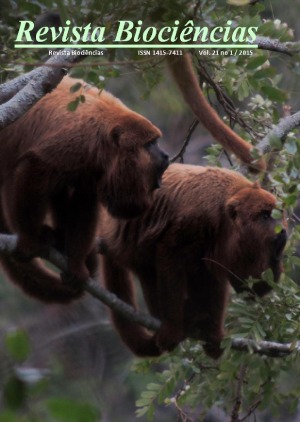Marine Environment perception by children in Rio de Janeiro, Brazil
Keywords:
environmental perception, drawings, marine biodiversity, children, public square.Abstract
Drawing besides being a recreational activity is also a form of communication, being adopted as a methodological strategy in environmental perception studies. Data collection was carried out in the framework of Children's Environmental Education Project in Public Square (EAPP). It occurred from December 2012 to July 2013 and it was developed in parallel to the swap and sustainability event ";;Let it go";; in Edmundo Rego Square. The methodology consisted of a facilitator using appropriate language, he asked children to draw a marine environment on a blank sheet. Behind every drawing sheet, he made notes on what the child expressed in the drawing. A semi-structured interview was applied to children and their parents. Both the content analysis of the speeches of interviews and children drawings were based on previously delineated categories, according to the theoretical framework. The sample added up to drawings of 82 children. Children belonged to a range of 4-12 years; most of them were girls and all residents of the city of Rio de Janeiro. They were originating in most from North Zone (89%), where the work was developed (Grajaú neighborhood). 54 macro elements were identified, of which 34% were biotic and 85% natural ones. Children see the marine environment as a natural site with organisms in it. Conversely, it is observed there is little presence of artificial elements. The results obtained from the analysis of the drawings show that the perception of children on the marine environment is shaped mainly by their family relationships.Downloads
Download data is not yet available.
Metrics
Metrics Loading ...
Downloads
Published
2015-08-10
How to Cite
Rua, M. B., Pedrini, A. de G., Bernardes, L., Mariano, D., Fonseca, L. B., Nunes, R. M., & Brotto, D. S. (2015). Marine Environment perception by children in Rio de Janeiro, Brazil. Journal of Biosciences, 21(1), 27–44. Retrieved from https://periodicos.unitau.br/biociencias/article/view/2109
Issue
Section
Educação de Biociências






